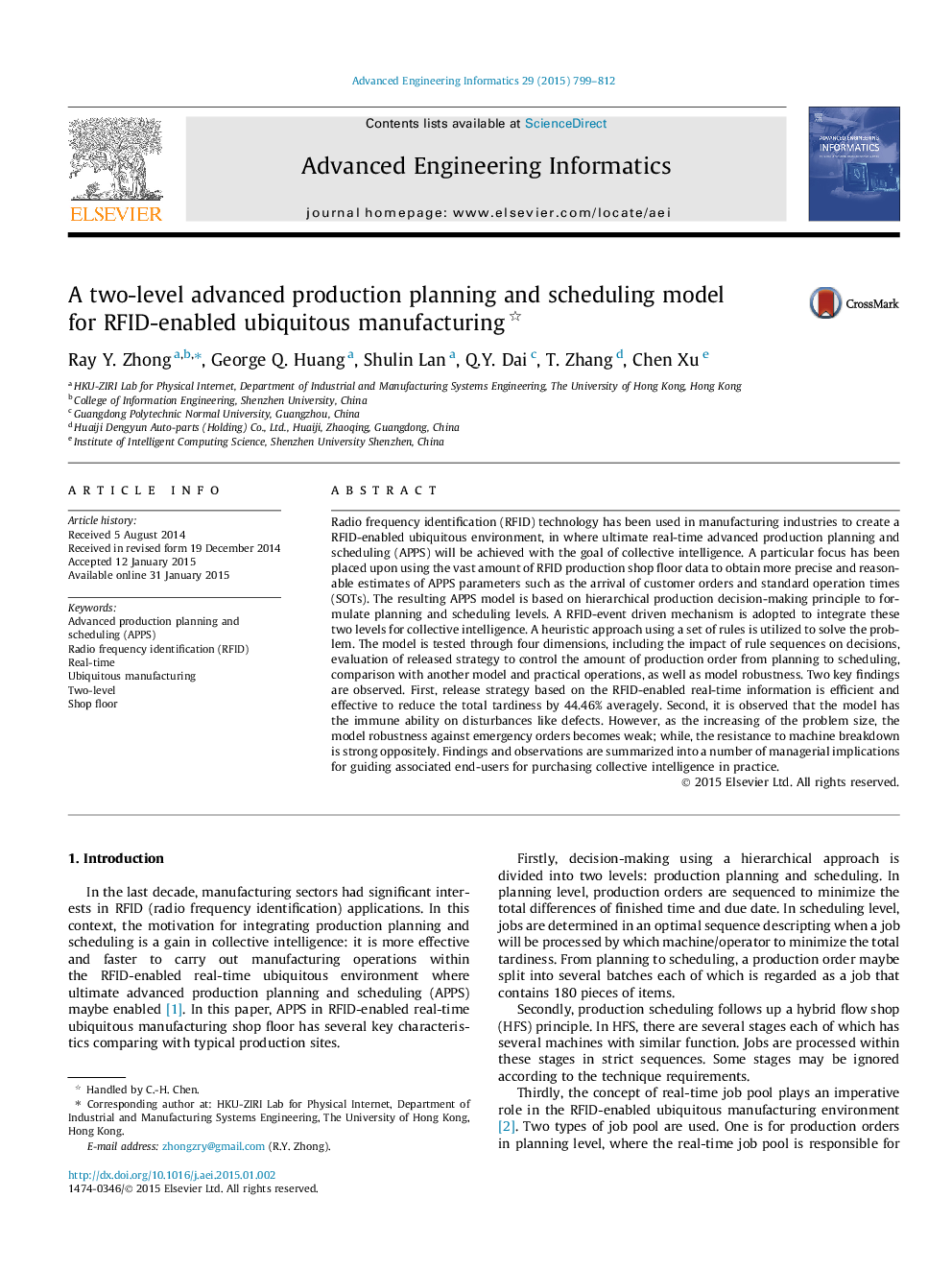| کد مقاله | کد نشریه | سال انتشار | مقاله انگلیسی | نسخه تمام متن |
|---|---|---|---|---|
| 241951 | 501794 | 2015 | 14 صفحه PDF | دانلود رایگان |

• An RFID-event driven mechanism is used to integrate planning and scheduling.
• RFID production shopfloor data was used to obtain APPS parameters.
• Release strategy is efficient to reduce the total tardiness by 44.46% averagely.
Radio frequency identification (RFID) technology has been used in manufacturing industries to create a RFID-enabled ubiquitous environment, in where ultimate real-time advanced production planning and scheduling (APPS) will be achieved with the goal of collective intelligence. A particular focus has been placed upon using the vast amount of RFID production shop floor data to obtain more precise and reasonable estimates of APPS parameters such as the arrival of customer orders and standard operation times (SOTs). The resulting APPS model is based on hierarchical production decision-making principle to formulate planning and scheduling levels. A RFID-event driven mechanism is adopted to integrate these two levels for collective intelligence. A heuristic approach using a set of rules is utilized to solve the problem. The model is tested through four dimensions, including the impact of rule sequences on decisions, evaluation of released strategy to control the amount of production order from planning to scheduling, comparison with another model and practical operations, as well as model robustness. Two key findings are observed. First, release strategy based on the RFID-enabled real-time information is efficient and effective to reduce the total tardiness by 44.46% averagely. Second, it is observed that the model has the immune ability on disturbances like defects. However, as the increasing of the problem size, the model robustness against emergency orders becomes weak; while, the resistance to machine breakdown is strong oppositely. Findings and observations are summarized into a number of managerial implications for guiding associated end-users for purchasing collective intelligence in practice.
Journal: Advanced Engineering Informatics - Volume 29, Issue 4, October 2015, Pages 799–812